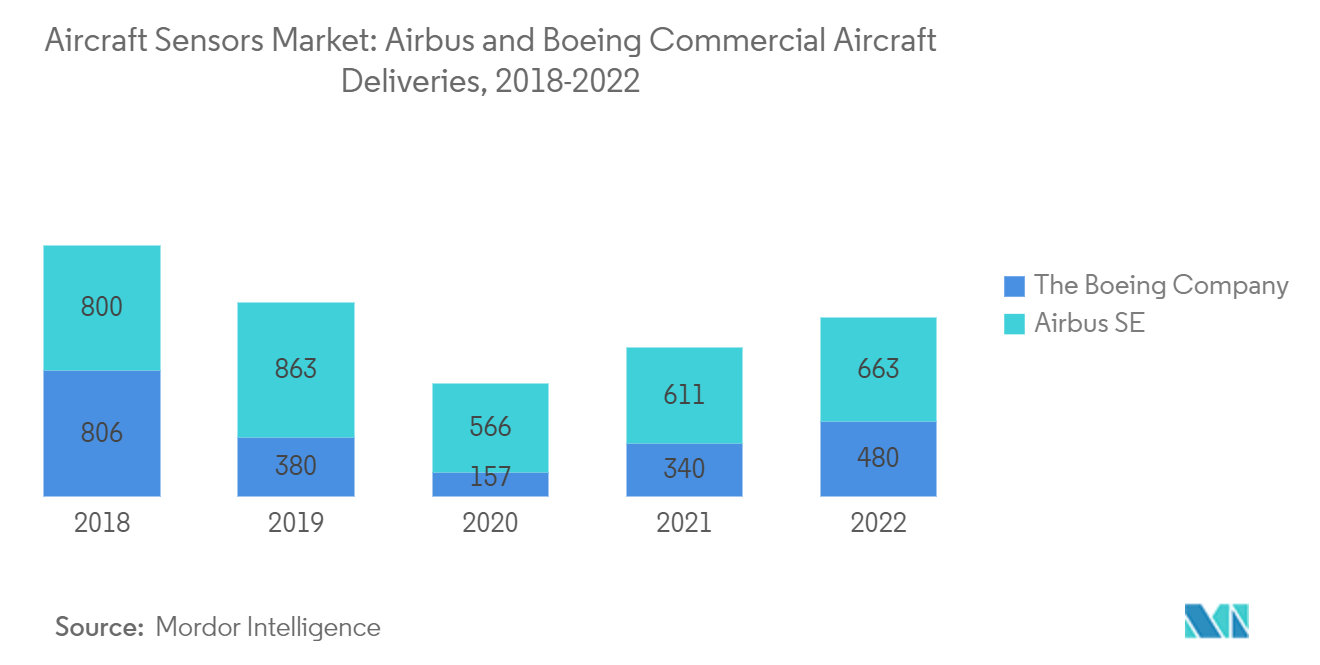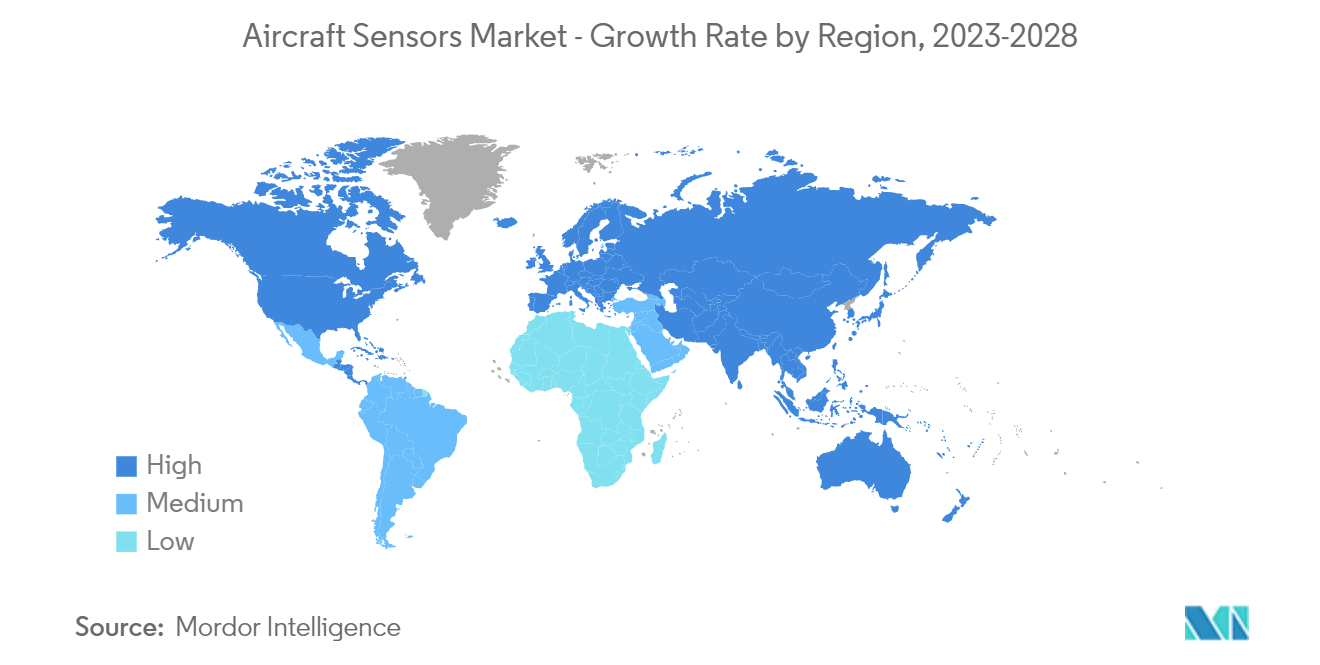Market Trends of Aircraft Sensors Industry
Temperature Sensor to Account for a Significant Share
- Temperature sensors play a crucial role in aircraft operations, being integrated into various parts of the aircraft, such as cabins, brakes, air ducts, inter-stage turbines, and hydraulic lines. Manufacturers of aircraft temperature sensors have to comply with industry standards and regulations to commercialize their products.
- One recent example of the importance of temperature sensors in aircraft is the introduction of Airbus' BelugaXL in July 2018. This next-generation aircraft with substantial cargo capacity requires multiple sensors, particularly temperature sensors, to regulate the optimum temperature in the cabin and cargo space. The high demand for sensors to monitor various parameters during flight or on the ground was driven by the BelugaXL's ability to transport large amounts of cargo. Similarly, Boeing's Dreamlifter, a significant cargo carrier, has also driven the demand for sensors worldwide.
- Furthermore, with the increase in air passenger traffic, aircraft original equipment manufacturers (OEMs) are expanding their manufacturing capabilities to meet the demand from end-users for new aircraft. This expansion will significantly increase the need for temperature sensors, especially in commercial aircraft, to ensure air passenger safety and comfort. This growing demand for temperature sensors in aircraft is expected to propel the growth of the market in the coming years.

North America to Dominate the Aircraft Sensors Market
Countries in North America, especially the US, have been making constant progress in terms of demand for new aircraft in all sectors (commercial, military, and general aviation). This demand is driven by factors such as rapidly growing passenger traffic and fleet modernization initiative undertaken by the US defense forces. Moreover, the need to maintain the airworthiness of the fleet, both scheduled and unscheduled maintenance, is carried out, which drives the demand from the MRO sector.
Moreover, US aerospace manufacturers are very competitive internationally. In terms of export sales, the industry contributed USD 143 billion to the US economy. The inward stock of FDI into the US aerospace manufacturing industry totaled more than USD 21 billion, depicting the scope for aircraft sensor manufacturers in the region. The United States is making deals with other emerging economies or countries to sell high-end military aircraft, which is likely to boost market growth over the forecast period.


